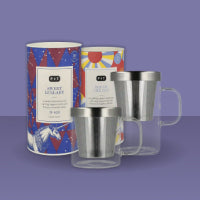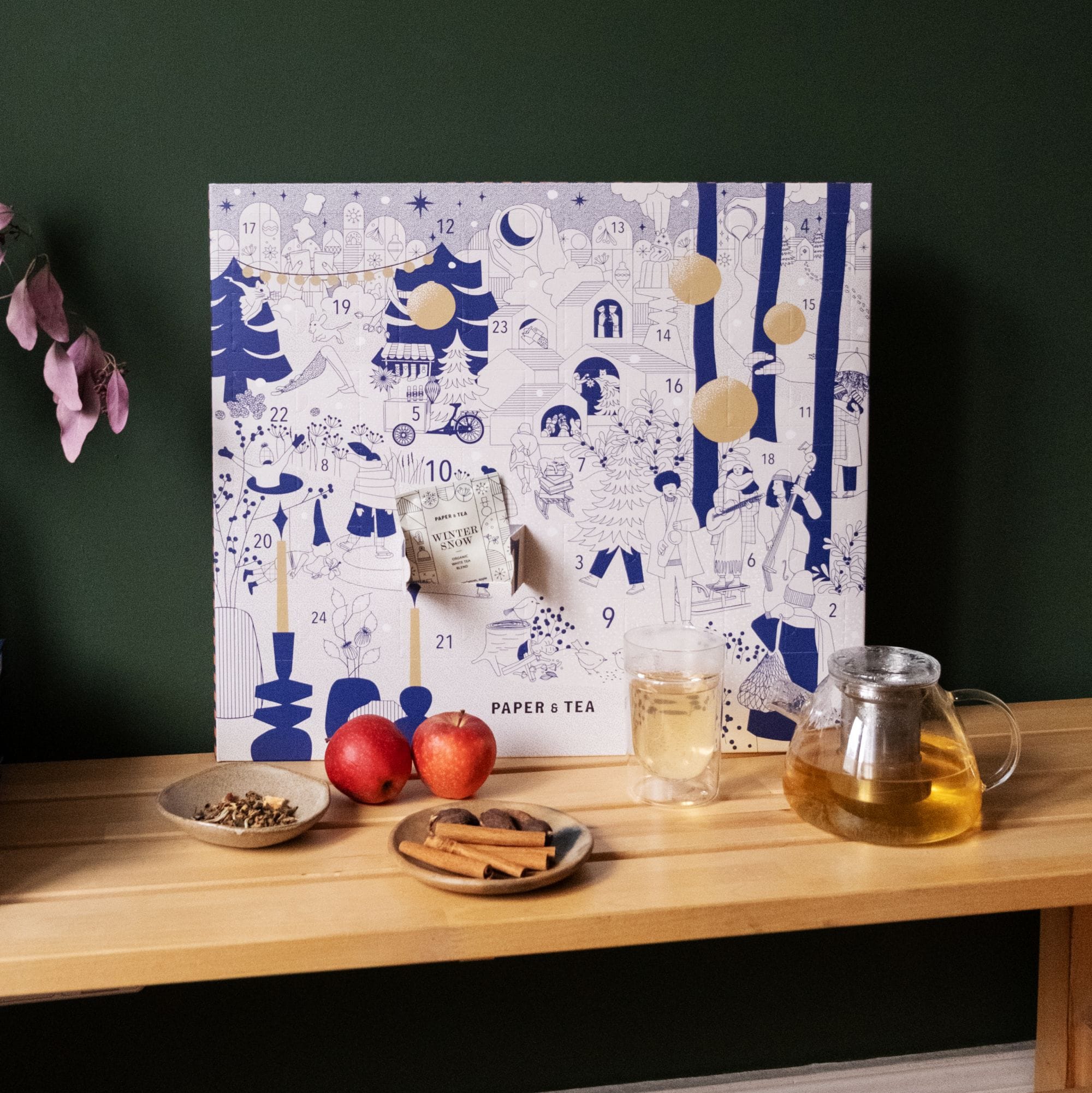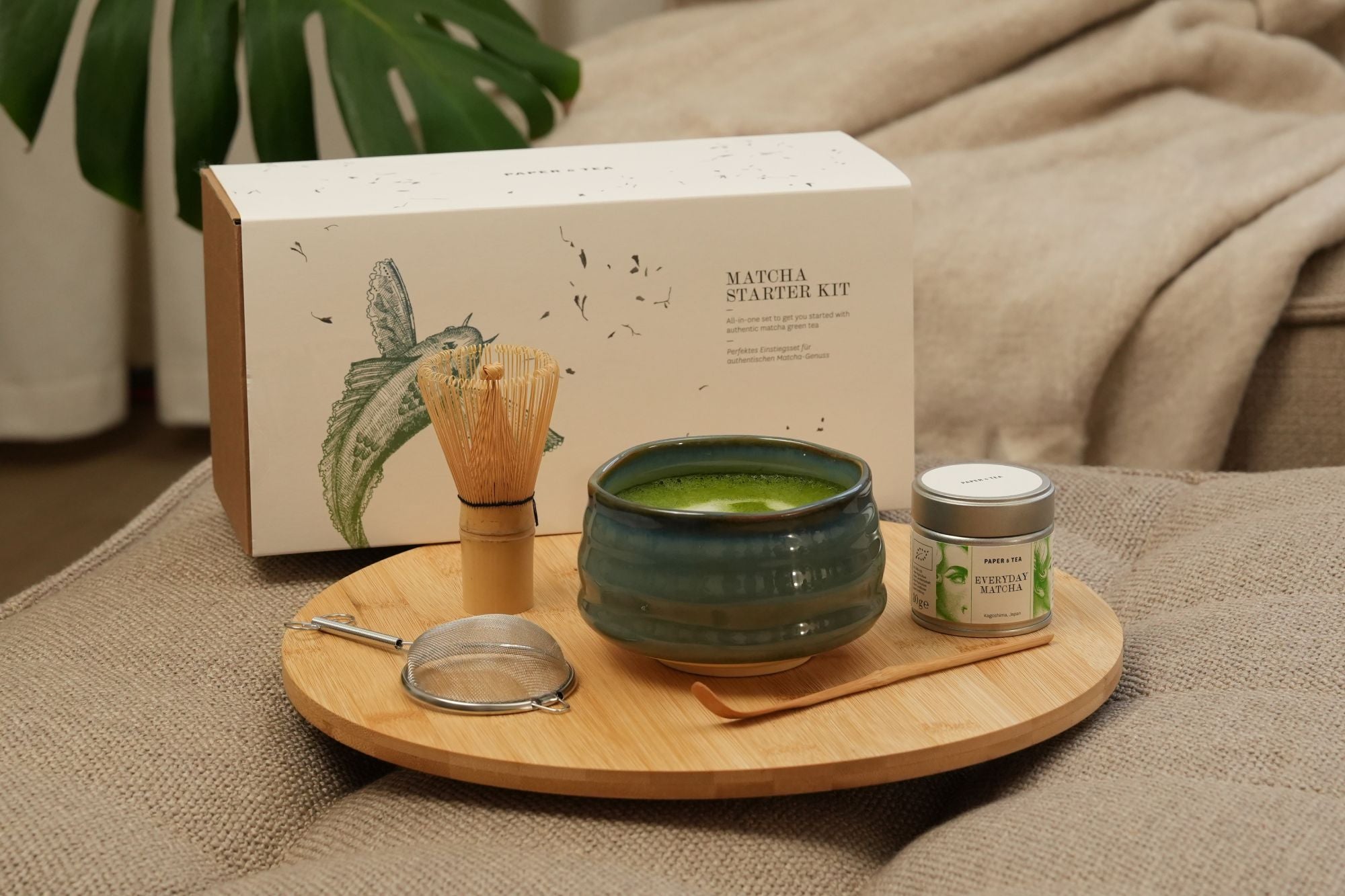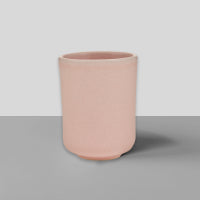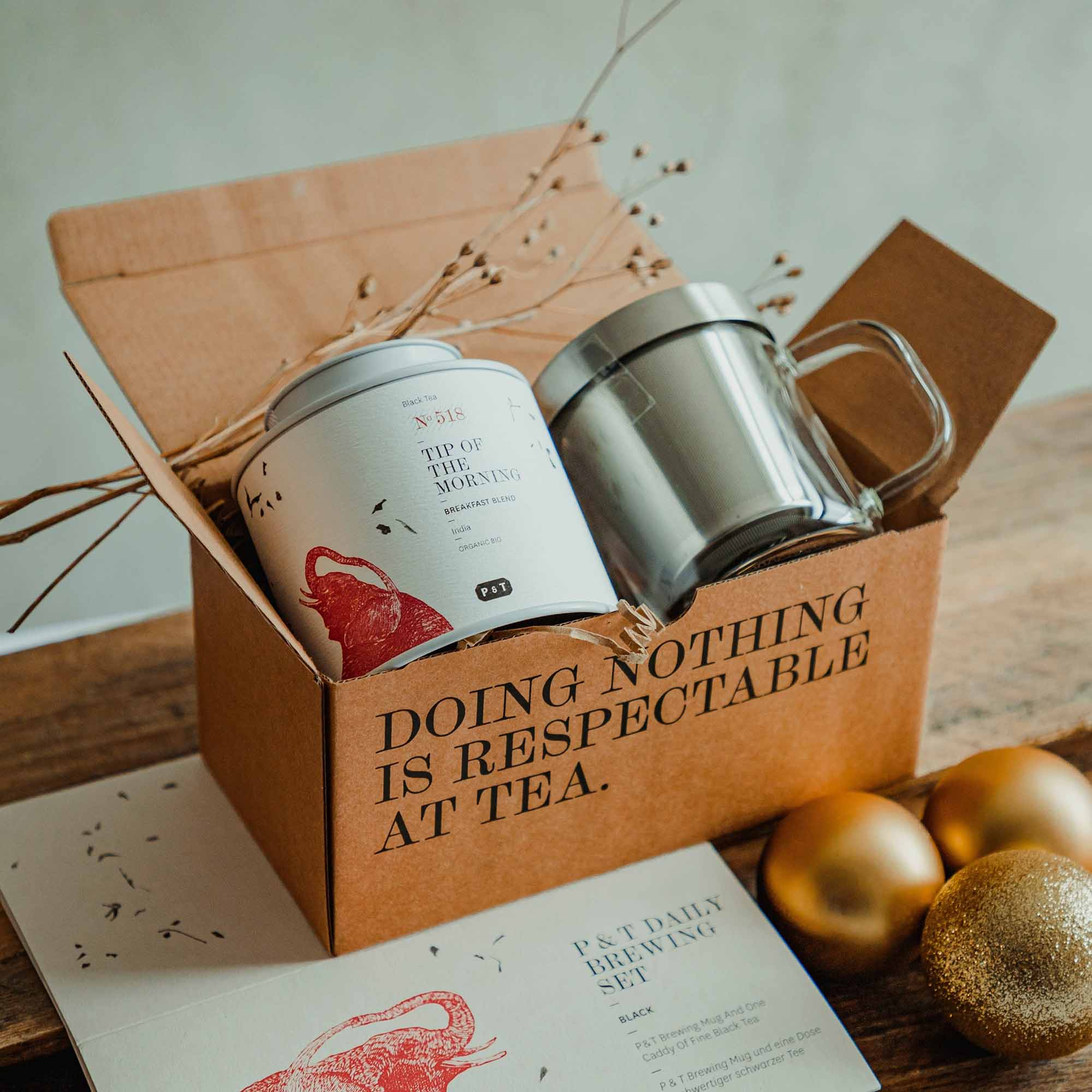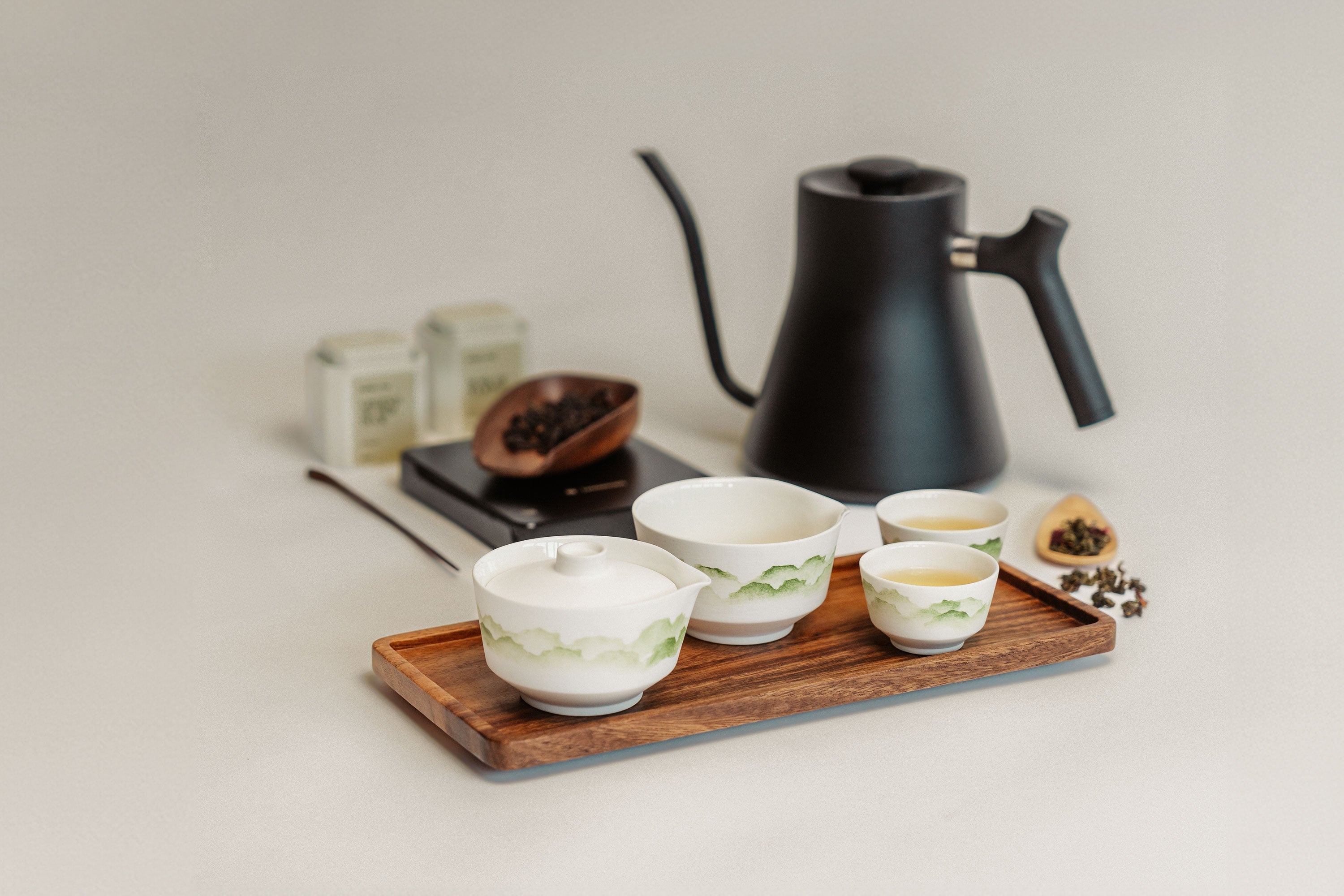The world of tea is rich and full of flavorful surprises. Many tea enthusiasts appreciate the deep flavors of green and black teas and the unique complexity of oolong teas. But even for tea lovers, there's a special tea that remains a hidden gem: Have you heard of yellow tea? Discover this extraordinary tea with us.
- The Golden World of Yellow Tea
- What is Yellow Tea?
- The History of Yellow Tea
- Origins & Tradition
- Methods of Production Over Time
- The Production Process of Yellow Tea
- The Best Farming Areas for Yellow Tea
- Yellow Tea Compared to Other Teas
- How to Properly Brew Yellow Tea
- Our Expert Tips for Enjoying Yellow Tea
- Yellow Tea – A Treasure for Tea Lovers
The Golden World of Yellow Tea
For those who delve deeper into the diverse world of tea, varieties like green tea, black tea, oolong, and delicate white tea are probably familiar. Even if you haven't tried them all, you know these colorful varieties are what make tea so fascinating. Yet, a true jewel among teas is yellow tea. Often unknown even to long-time tea fans, this rare Chinese brew is a delicacy you shouldn't miss.
What is Yellow Tea?
Knowledge about yellow tea is mainly concentrated in China, where this special type originates, and its complex flavor is highly valued. The yellow infusion tastes sweet, fresh, and nutty, with a gentle, floral aroma. It's often described as a milder version of green tea.

The History of Yellow Tea
With every sip of yellow tea, you experience a part of Chinese history dating back to the Tang Dynasty (617-907 AD). For a long time, yellow tea was reserved exclusively for the Chinese emperor and the knowledge of its production and preparation was strictly guarded. Today, only a few tea masters in China still retain the knowledge to produce this imperial tea.
Origins & Tradition
Yellow tea gets its name not just from its naturally golden color but also from its association with the Chinese emperor. The color mandarin yellow was reserved solely for the nobility. Each province had to pay tribute to the emperor, including regions famous for their tea cultivation. These regions sent their most exclusive tea rarities to the rulers, and teas from these harvests quickly became known as imperial teas.

Methods of Production Over Time
The artful processing of yellow tea is no longer an imperial secret but remains specialized knowledge requiring a lot of craftsmanship and dedication. Despite a flourishing global tea market and an increasing number of tea-growing regions, the production of yellow tea is still concentrated mainly in China. Let's take a closer look at the unique production process of this precious tea.
The Production Process of Yellow Tea
It's believed that yellow tea was originally developed to refine green tea. Several production steps are required from the freshly picked tea leaf to create the golden yellow specialty. The multi-step process begins with classic roasting. Then the tea leaves are wrapped in cloth and left to rest for controlled oxidation. Here are the detailed steps:
Picking the Tea Leaves
The first step is the harvest of the tea leaves. Since genuine yellow tea is a particularly high-quality variety, the leaves are picked exclusively by hand. Often, only the leaf bud is harvested, sometimes along with the first tender leaf. Because these are mostly early harvests, the buds and leaves have a particularly fresh taste.

Wilting & Heat Treatment
The production of yellow tea starts like green tea, with a fixation process through wok roasting. This dry heat treatment temporarily stops the oxidation of the tea leaf without completely drying it out. The moisture trapped inside the leaves is preserved, allowing for controlled oxidation later. The leaves are then rolled and prepared for the crucial processing step known as "Men Huang."
"Men Huang" is a term from Chinese tea culture that literally means "turning yellow." During this step, the heat-treated tea leaves are wrapped in cloth to undergo gentle and controlled oxidation. This specific oxidation gives yellow tea its characteristic golden yellow color and mild, unique taste. The "Men Huang" step is typical in the production of yellow tea and distinguishes it significantly from green and black tea.
Yellowing & Drying
During the typical processing step, Men Huang, the tea leaves take on their distinctive yellow color, and the tea develops its unique flavor. Through gentle fermentation, the tea loses the grassy notes of green tea and instead gains soft, sweet aromas. Once the Men Huang process is complete and the tea has achieved the desired complexity of flavors, production ends with a final drying step.
The Best Farming Areas for Yellow Tea
Yellow tea owes its unique taste not only to this special production method. The soil and the surrounding nature where the valuable tea plants grow also significantly contribute to the quality and aroma of the tea. Let’s take a look at the origins of yellow tea!
Huangshan – Home of Yellow Tea
An old Chinese saying goes that famous mountains produce famous teas. The impressive Huangshan Mountain is one of the most renowned regions for producing top-quality teas and is famous for its yellow tea.

Junshan – Exquisite Teas from the Island
Another important area for yellow tea cultivation is Junshan Island. It is located in the middle of Dongting Lake in Hunan Province. The tea gardens are surrounded by blooming trees, contributing to the natural floral aroma of the tea.
Yunnan – The Cradle of Tea
The southern Chinese province is considered the largest tea-growing region in China and is regarded as the origin of the tea plant Camellia sinensis. It's no wonder that this significant region also cultivates the flavorful yellow tea, like our LEIZU’S GOLDEN SILK. We appreciate the pleasant sweetness and the interplay of floral and vegetative notes of this exquisite yellow tea.
Yellow Tea Compared to Other Teas
It's amazing what flavor variety a single plant can produce. Yellow tea is one of the six tea types derived from Camellia sinensis. Often described as a milder version of classic green tea, it also possesses sweet notes reminiscent of Chinese black tea. It shares a hint of floral aroma with oolong, and because yellow tea primarily uses tender buds, it also has similarities with white tea. See for yourself the complex flavors by trying a sip of our in-house yellow tea, the LEIZU’S GOLDEN SILK.

How to Properly Brew Yellow Tea
Proper preparation is key to bringing out all the flavor potential of yellow tea. Here’s how you can properly brew this rare tea from China:
The Perfect Water Temperature
Yellow tea is like green tea in its processing, so it's important to avoid using boiling water. We recommend a maximum temperature of 80°C to allow the fine buds and leaves to fully release their flavors.
The Right Steeping Time
For preparation in a teapot, let yellow tea steep for a maximum of 2 minutes before removing the infuser. Yellow tea is excellent for multiple infusions. For each infusion, extend the steeping time by a few seconds to reveal and enjoy the tea's complex flavors.
Our Expert Tips for Enjoying Yellow Tea
Each type of tea carries a unique variety of flavors. To enjoy them as purely as possible, you should choose a teapot made from materials like glass, porcelain, or coated ceramic, which don't absorb the flavors of the tea. With our WÙ POT and the accompanying PÙ SERVING POT, you can brew your yellow tea following the Chinese Gong Fu Cha tradition. This traditional brewing and infusion technique with short steeping times and transferring the tea from the brewing pot to a serving pot allows the diverse aromas of yellow tea to shine.

Yellow Tea – A Treasure for Tea Lovers
Once reserved solely for the Chinese emperor, today yellow tea is a highlight for tea lovers around the world.
Whether it's yellow, green, or black tea from China, each tea variety reveals a piece of this unique tea culture. We invite you to immerse yourself in the fascinating world of tea during a tea tasting at one of our stores near you. Join us for an hour of tea discovery!
